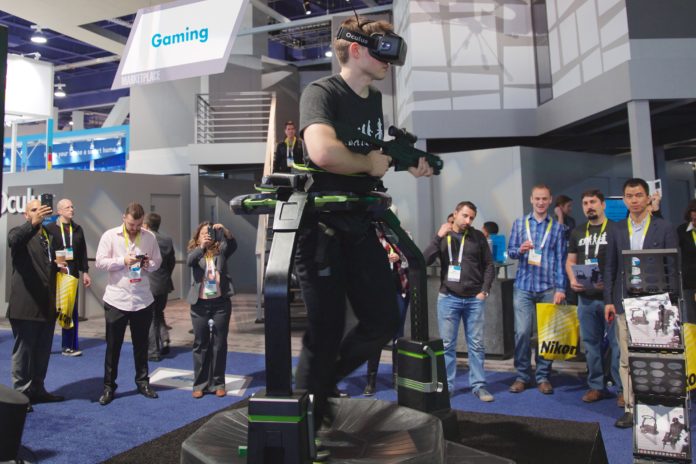In 2006, Nintendo launched an ambitious new console they called the “Wii.” They used this name to signify the group gaming capabilities they wanted to launch with the new hardware, and the flagship title was “Wii Sports.” The collection of games exhibited what was possible with peripherals. Wii boxing and Wii tennis were the two that really got gamers’ blood pumping.
Bowling was a hit, but tennis and boxing pushed your heart rate. They required endurance and stamina. You felt, for the first time, like gaming could really help you accomplish a fitness goal.
Fast forward a little more than a decade, add a headset, and we’ve essentially arrived at modern VR. But virtual reality is so much more than an extremely immersive Wii boxing simulator, and that promise has everything to do with solving locomotion in VR. When we’re finally able to move within our space, everything changes.
Solving the Space Problem: Redirected Walking

One of the ways that researchers have discovered VR can manipulate us is using our sense of space to keep us in motion. By giving us specific waypoints within the virtual world, VR can help us alter our direction around a space without hitting walls or obstacles. This type of setup would require motion capture technology and a decent sized room. The system would map out the dimensions of the space and create carefully placed waypoints within the world that keep you (the subject) constantly moving toward the wall farthest from you.
A first-person shooter would be a good example of this at play. Developers might put crates or walls around an arena, so you would need to move around these objects (based on objects within your own room) in order to find cover from the hoards assaulting you. You would certainly feel the burn in your calves, thighs, and core while you try and dodge incoming gunfire aimed at your head.
The early stages of this technology show a great deal of promise, but the user needs to be ushered to the next phase. VR games will need to be creative and exploratory. Expect workouts in the very near future to involve sifting through lost temples or sunken ships, searching for treasure while you do squats and get your cardio in for the day.
Consumer Solutions
As you might imagine, there’s a huge demand for this technology in the market. Some of that demand is already being met. The Vive features trackers for use with the upper body, allowing you to move fully within a 15’ x 15’ room. Priced at $599 as of writing, this is a tremendous value for those with space for it. The Oculus Rift is a bit more price conscious with trackers priced at $59, in addition to the base price of $399. Both systems promise the same level of tracking, with Oculus claiming three sensors are needed for the best possible experience.
The Virtuix Omni is the next best choice, with a waist harness and a pair of shoes required for the full experience. The good news with the Omni is that it includes a suite of games with purchase, but it’s still a very pricey $699 at least (currently, the website suggests calling for a quote).
It’s fair to say consumer solutions need some time to find development, and a wider audience, but there are several options you can try today if you’re near a virtual reality center.
Final Thoughts
Locomotion really unlocks exercise potential, especially when we’re able to run and jump within a virtual world. There are some limitations to current technology, such as the variables involved with animating someone’s legs during movement, but the technology is already showing a lot of promise.
The Omni is where you can see these concepts refined, with lots of stat tracking to ensure you can see how you grow each time you dive into the virtual realms. Add some wearables and solid motion tracking system and the term “skill-based” will begin taking on a whole new meaning.


